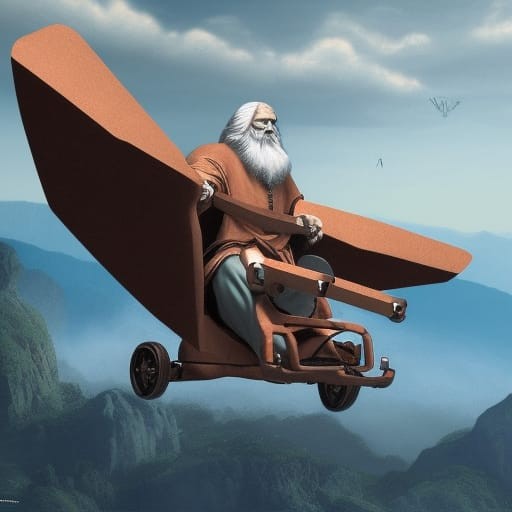
How Leonardo da Vinci's flying machine designs is inspiring the development of modern day flying cars
Governments in Western nations, the Middle East, China and Japan have already began outlining policy and regulatory frameworks for the operation of flying cars within the decade. Even within our contemporary era, conceiving these cars competing with birds, helicopters and other low flying aircraft in the air for space might seem a bit farfetched. Yet merely six centuries ago, perhaps the most enigmatic scientific thinker of our race, Leonardo da Vinci had provided arguably the first ever technical specifications for a human controlled, flying machine.
When we think of Leonardo da Vinci, we often think of his iconic paintings, such as the Mona Lisa and The Last Supper. However, da Vinci was also a visionary inventor and engineer, and his designs for flying machines have inspired countless inventors and engineers over the centuries. Today, da Vinci's flying machine designs are being revisited as a source of inspiration for the development of modern day flying cars.
In the late 15th and early 16th centuries, da Vinci was obsessed with the idea of human flight. He made numerous sketches and detailed drawings of flying machines, including gliders, ornithopters (machines that mimic the flapping motion of birds' wings), and even a prototype for a helicopter. Despite the fact that many of his designs were never built, they were far ahead of their time and contained concepts and principles that are still used in modern aircraft design.
One of da Vinci's most famous flying machine designs is the "ornithopter," a machine that would use the flapping of its wings to achieve flight. This design was particularly innovative because it recognized the importance of lift and thrust in achieving flight, which is a fundamental principle of modern aircraft design. Although da Vinci's ornithopter was never built, it inspired numerous inventors and engineers over the centuries to develop their own flying machines using similar principles. A bit over a decade ago, a team from my alma mater (the University of Toronto) built the world's first human powered ornithopter. Inspired by da Vinci's designs, the ornithopter maintained flight for approx. 19 seconds.
Today, da Vinci's flying machine designs are still being revisited as a source of inspiration for the development of modern day flying cars. These vehicles, also known as "vertical takeoff and landing" (VTOL) aircraft, are designed to take off and land like helicopters, but fly like planes. They have the potential to revolutionize transportation by offering a faster, more efficient, and more environmentally friendly alternative to traditional cars.
There are several companies and organizations around the world that are working on the development of flying cars, and many of them are drawing inspiration from da Vinci's designs. For example, the AeroMobil company has developed a prototype for a flying car that uses a hybrid propulsion system, with both a gasoline engine and electric motors, to achieve flight. This prototype was inspired by da Vinci's design for a flying machine that used a similar hybrid propulsion system.
Another company that is drawing inspiration from da Vinci's flying machine designs is Urban Aeronautics, which has developed a prototype for a flying car that uses ducted fans, similar to those found in da Vinci's ornithopter designs, to achieve flight. This prototype is designed to be small and lightweight, making it well-suited for use in urban environments.
In addition to these companies, there are also several organizations and research groups that are working on the development of flying cars. For example, the Vertical Flight Society, an organization that promotes the development of VTOL aircraft, has a dedicated "Flying Car Committee" that is working on advancing the technology and promoting the adoption of flying cars.
There are several challenges that must be overcome in order to make flying cars a reality, including issues related to safety, cost, and regulatory hurdles. However, with the rapid pace of technological advancement and the growing demand for more efficient and sustainable modes of transportation, it is very likely that we will see flying cars become a reality within our decade. And when that day comes, we will have Leonardo da Vinci to thank for the inspiration and the pioneering concepts that made it all possible.